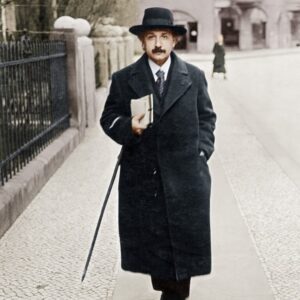Diamonds are a Qubit’s Best Friend: Solid-State and Operational at Room Temperature
The diamond quantum revolution
Excerpts and salient points ~
+ Quantum technology research covers quantum computing, simulation, communication and sensing, with potential impacts in healthcare, the automotive industry and the development of new materials, to name a few. Currently a wide range of different technological solutions are being investigated for these new applications, such as trapped ions, superconductors, quantum dots, photons and defects in semiconductors. Each technical solution has different pros and cons. Trapped ions have exquisite quantum properties but are challenging to integrate, whereas circuits of superconductors can be fabricated but can only operate at cryogenic temperatures. This is where materials like diamond come into play as they offer a compromise by being solid-state – making it easier to integrate into devices – and operational at room temperature.
Over the next decade, a few academic groups around the world picked this work up, hoping to use diamond as a quantum bit, or “qubit”, in quantum information devices, such as quantum computers. This work was undertaken using a single, unique natural diamond dubbed the “Magic Russian Diamond”.
+ A lot of research into diamond has focused on identifying the hundreds of different defects that can be found within the carbon lattice. One such imperfection is the negatively charged nitrogen-vacancy (denoted as NV) defect (see box below). In 1997 Jörg Wrachtrup and colleagues at the University of Technology Chemnitz in Germany showed that a single NV defect could be manipulated and provide an optical output at room temperature (Science 276 2012).
+ This discovery sparked the field of diamond quantum technology (see Nature 505 472 for a more detailed history). The process is called optically detected magnetic resonance (ODMR) and, with the NV defect, it is observed when measuring a change in fluorescence after shining green light on a single NV defect, or on an ensemble of them, while scanning an applied microwave field. When the field hits resonance with the spin quantum numbers (ms) causing a transition from ms = 0 to ms = ±1, a decrease in fluorescence is observed. So by measuring the intensity of the fluorescence, you can read out the spin state of the defect.
+ The reasons why diamond provides such a wonderful host to quantum defects come from its crystal structure. For example, diamond is a wide band-gap material, meaning that it can host a range of defects with transition energies in the optical regime, enabling the defects to be manipulated with readily available lasers. As carbon has a low atomic mass and very stiff interatomic bonds, it has a high Debye temperature (the temperature of a crystal’s highest normal mode of vibration), which makes the interaction of the NV centre with the vibrational modes of the surrounding lattice unusually weak, even at room temperature.
+ Diamond also has a naturally low concentration of nuclear spins (carbon-12 has a nuclear spin of 0 and there is only 1.1% carbon-13 (spin –1/2) in diamond). This reduces the likelihood of the quantum states “decohering”, when the spin is no longer in the desired state. Quantum states can also decohere via spin-orbit coupling – a relativistic effect where the spin of a charge interacts with its orbital motion.
+ But because the NV defect has weak spin-orbit coupling, there is limited decoherence and the spin state lasts for longer. Together, these properties mean that it is possible to fabricate a diamond with a spin decoherence time of milliseconds at room temperature. And as well as diamond being a good host for spin defects, the NV centre is also particularly special in that its electronic energy-level structure means that the electronic spin associated with it can be manipulated simply by shining green light on it.
Source: physics world. Matthew Markham and Daniel Twitchen, The diamond quantum revolution…
Content may have been edited for style and clarity.

